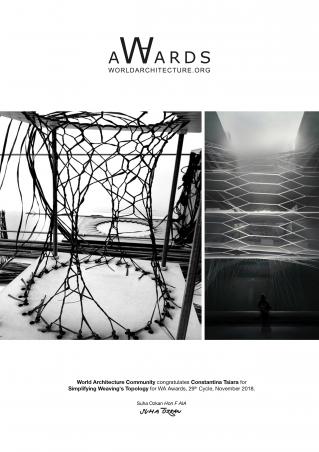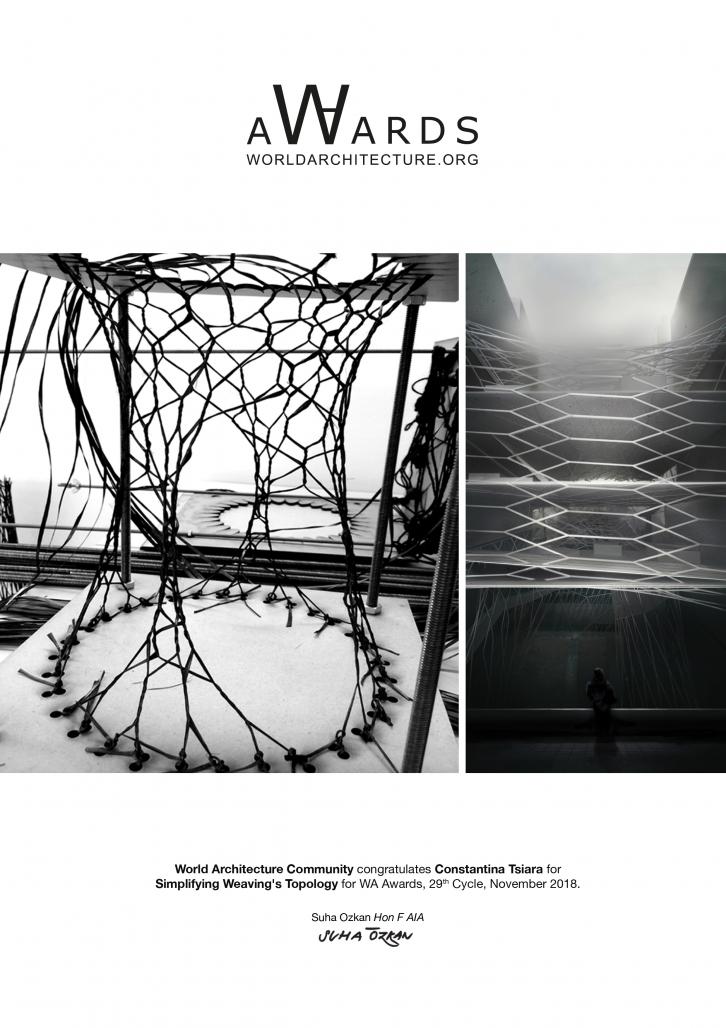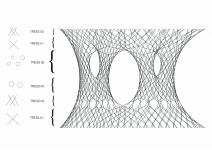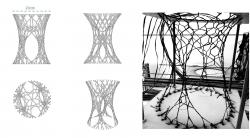The project Weaving is a research on creating weaved forms inspired by Frei Otto’s experimentations and Vladimir Shukov’s Towers. with the use of new materials and new means of design. The objective of this project is to simplify Weaving’s complexity in order to construct a 3D-weaving structure with the use of a 6 axes robotic arm. The initial idea is the invention of a mechanism that could create different weaving topologies. The work is divided in 3 stages:[(1) Generation of forms by the invention of a mechanism, (2) Construction details (materials and optimized mechanisms), (3)Architectural creation.
Generation of forms
In the fist stage we found a mechanism that enables the robot to work with more than one wire in space. The dynamics of the mechanism were simulated and categorized, in order to create an algorithm that could generate forms from the given topologies.
Construction Details
In the 2nd stage, we ran simulations and experimented on different patterns and their physical abilities. This led to optimized mechanisms that are more efficient in terms of space usage, - a critical fact given it facilitates the fabrication. Based on a benchmarking exercise with several materials, we identified that the material with the optimal identities is the carbon fiber that is reinforced with resin.
Designing the Architectural scale.
In the last stage, we focused our research on the actual capabilities of robots creating such constructions. In order to evaluate the feasibility of the mechanisms described above, a case study was employed. The case study focused on a vertically developed pocket park in the city center of Thessaloniki. The outcome of this project is a functionally autonomous structure that spans between existing buildings and is structurally attached to all horizontal and vertical position points.
Weaved forms are complex by definition, especially when one has to define the weaving framework and to decode the weaved form’s structure. As a result, the use of an algorithm is necessary to produce complex weaved forms. The proposed algorithm simplifies the complex process of weaving with robotic arms (including design and fabrication) and is a powerful tool for designers willing to produce weaved forms that can solve urban problems.
2015
2016
Diploma Design Thesis project Aristotle University of Thessaloniki / Ecole Nationale Superieure d’Architecture Paris – Malaquais
Instructor : Philippe Morel
Supervisor : Anastasios Tellios
Type: Research, Robotics,Algorithmic Design
Collaborators: Bertrand Chapus
Software: Grasshopper (Kangaroo Physics, Karamba, HAL Robotics), Python, Vray
Material Prepregged carbon fiber (JEC Composites)
Bertrand Chapus
Simplifying Weaving's Topology by Constantina Tsiara in France won the WA Award Cycle 29. Please find below the WA Award poster for this project.

Downloaded 45 times.











